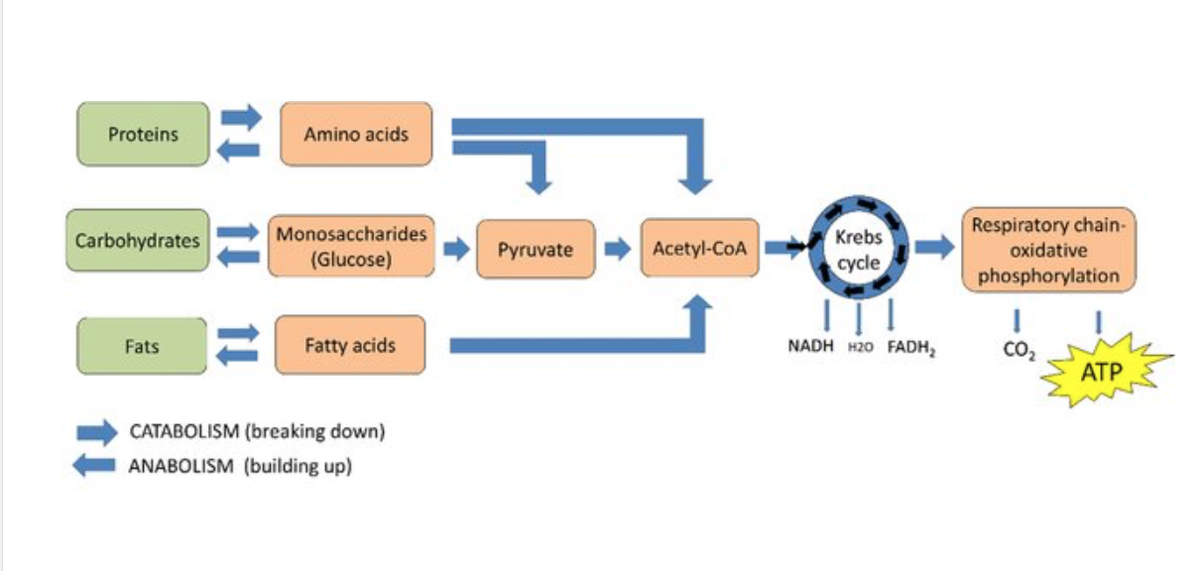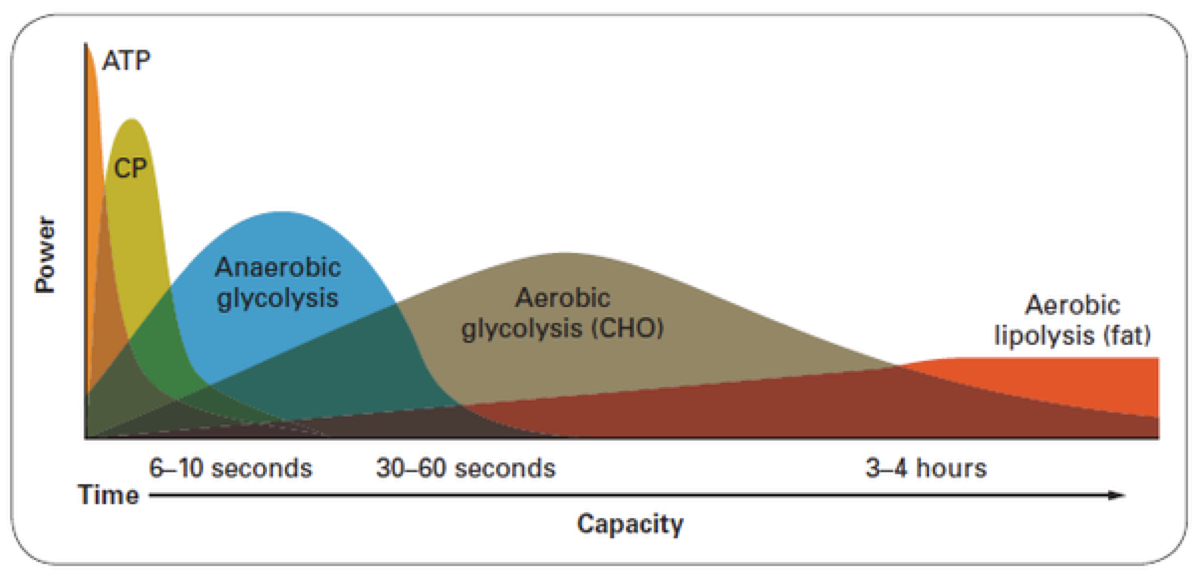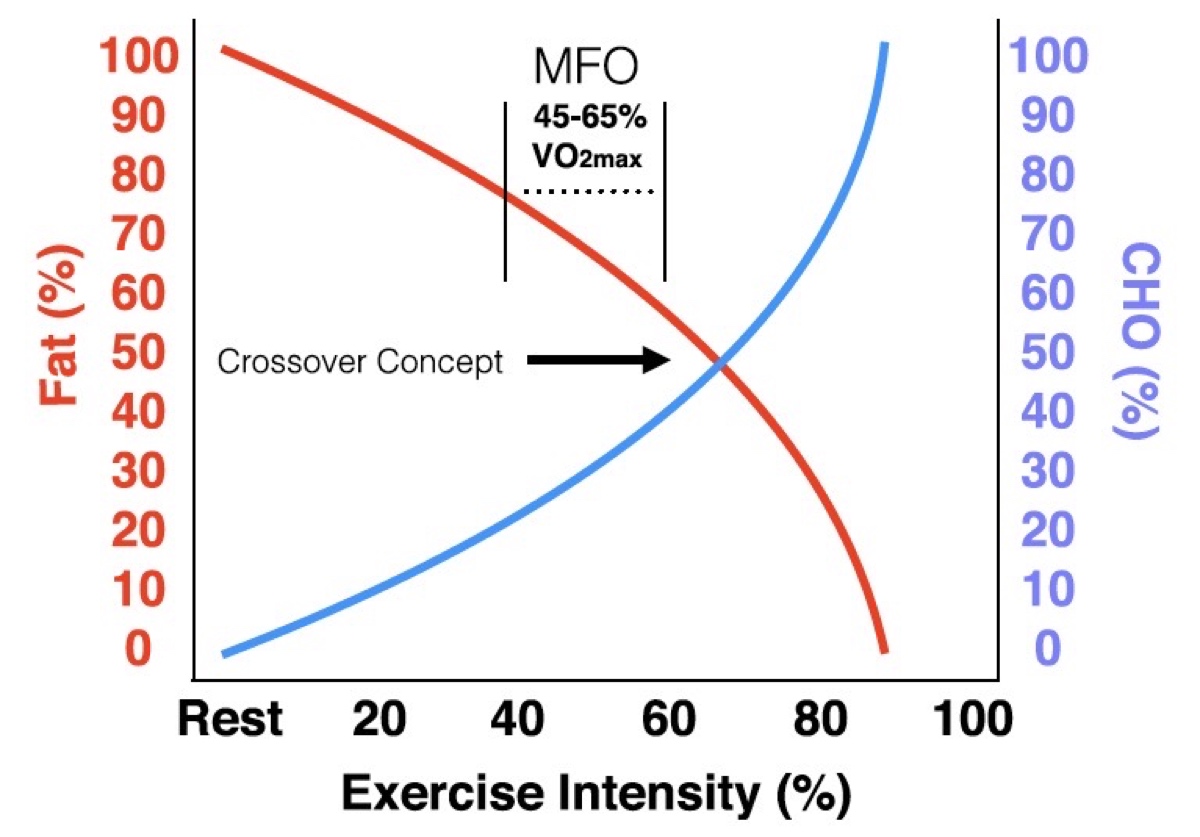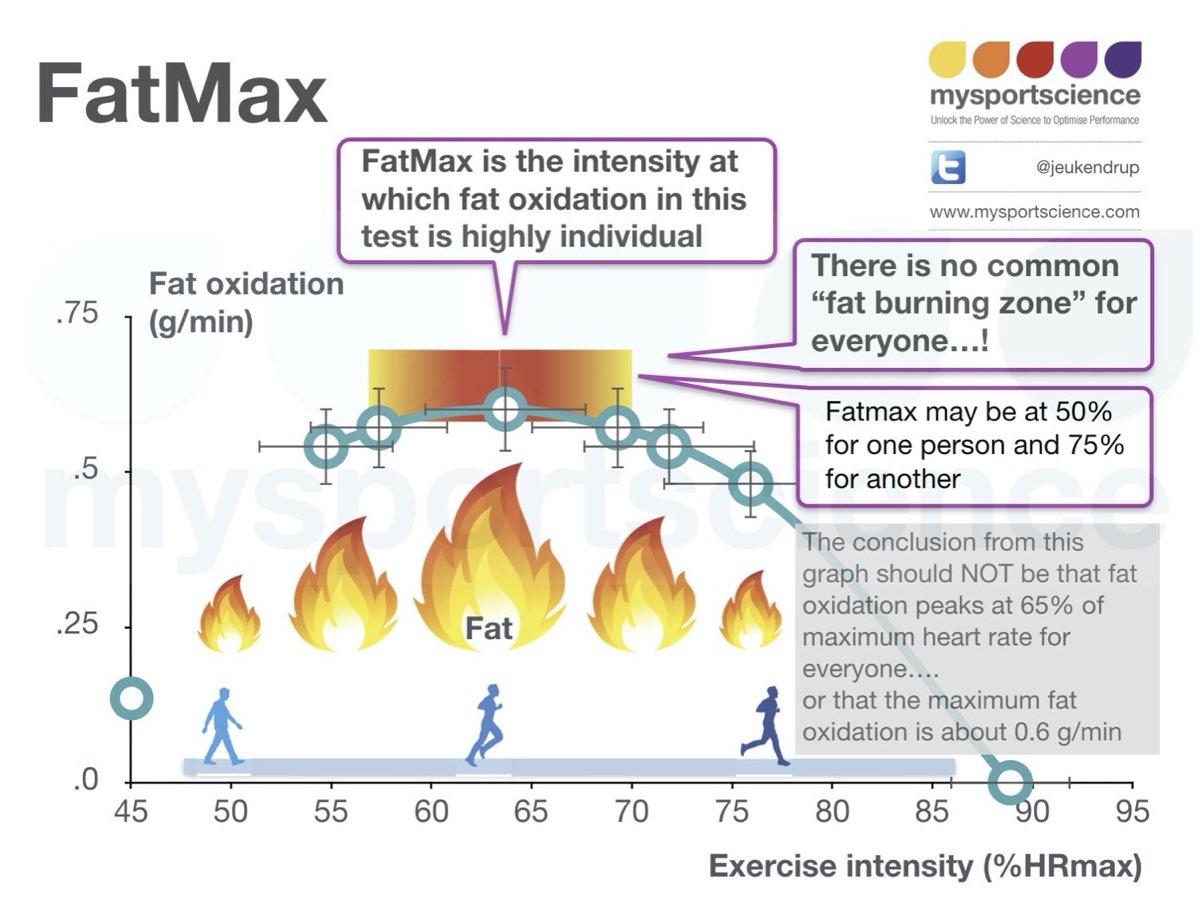The list of things I’m afraid to write about is pretty short, religion, politics, you get the picture. And, of course, we can’t forget that hairy and heated topic in athletics, nutrition. Primarily we debate over this question: Is there a “best” way to fuel for endurance performance?
Like many things, nutrition is highly individual and we know that what works for one person doesn’t for another. Additionally, this article and the research presented here focus on fueling for endurance-athletic performance which is a universe away from fueling for clinical health (such as for weight loss or to manage diabetes). I hope that you all will help contribute to a thoughtful conversation at the end of this, because quite honestly I’ll be sweating it out.
In the debate around endurance fueling, people generally fall into one of two camps: a low carbohydrate high fat diet (LCHF) or a high carbohydrate availability diet (HCHO). LCHF is often lumped with diets referred to as ketogenic (in which the body enters a state of ketosis where fat is the primary fuel). HCHO diets are where carbohydrates are readily available for energy needs and they represent a more typical diet. It looks like this when broken down into macronutrient content:
- Low carbohydrate high fat diet (LCHF): 75 to 78% fat, 15 to 20% protein, and about 2 to 5% from carbohydrates (less than 50 grams of carbohydrates per day)
- High carbohydrate availability diet (HCHO): 60 to 65% carbohydrates, 15 to 20% protein, and about 20% fat. We importantly note that in the HCHO diet the primary focus is not high carbohydrates but high carbohydrate availability. This generally means carbohydrates are regularly ingested pre-, during, and post-training sessions based on individual needs, which follows the most traditional sports-nutrition guidelines (1).
A third option has come to the top of this heap more recently, and that is a periodized carbohydrate approach (PCHO). The PCHO approach has the same basic macronutrient structure as a HCHO diet, with about 60 to 65% of daily calories coming from carbohydrates. The major difference is timing, as on a PCHO diet, an athlete focuses on using carbohydrates more strategically, targeting some training sessions with intentionally high or low carbohydrate availability dependent on the session’s demands. Some might call this a best-of-both-worlds approach, but we will dive into that more shortly.
So, what does the science say? Is there a best strategy? The answer is, of course, that it’s complicated.
How Does Our Engine Utilize Fuel?
Let’s start with an overview of how your body utilizes both endogenous (internal, in this case glycogen and fat stores) and exogenous (external, in this case fuel eaten) energy sources.
Performing work or generating force–getting you down the trail or up the hill–requires energy, and when it comes to our muscles that energy is adenosine triphosphate (ATP, a molecule that captures chemical energy obtained from breaking down food) and very briefly creatine phosphate (a naturally occurring organic compound that facilitates muscle contractions). There are several different metabolic pathways your body uses to turn carbohydrates, fats, and proteins into ATP, largely dependent on the availability of oxygen (aerobically/with oxygen or anaerobically/without oxygen).
You may have heard the saying, “The mitochondria is the powerhouse of the cell,” and there’s a lot of truth in that statement. Our bodies take the carbohydrates, fats, and proteins that we ingest and metabolize them into glucose, fatty acids, and amino acids, respectively. The metabolic pathways by which this happens are called glycolysis (breaking down carbohydrates), lipolysis (breaking down fats), and protein metabolism via digestive enzymes (breaking down proteins). These are further broken down into pyruvate and/or Acetyl-CoA. From there, generally, pyruvate and Acetyl-CoA are brought through the Krebs cycle (also known as the citric-acid cycle which continues to break down sugars) and then the oxidative-phosphorylation system (where adenosine diphosphate becomes ATP, releasing energy) in our mitochondria to produce ATP and a byproduct, carbon dioxide. I know that’s a lot, but what it basically means in our case is wooohooo, energy to run!

The carbohydrates, fats, and proteins we ingest are metabolized into glucose, fatty acids, and amino acids, respectively. From there they are further metabolized into pyruvate or Acetyl-CoA, which in turn are metabolized via the Krebs cycle and oxidative-phosphorylation system in our mitochondria. Image: Researchgate.net/publication/325938447_Regulation_of_Cellular_Metabolism_by_High-Risk_Human_Papillomaviruses/figures
At times of rest or decreased energy demand, our bodies can also store extra energy from that which we ingest to be used later. Carbohydrates can be stored in your liver and muscles as glycogen (approximately 1,800 to 2,000 calories worth) (3). When you’re running, your muscles convert their glycogen back to glucose which allows your muscle fibers to utilize it directly. Your liver glycogen is converted to glucose and then released into your bloodstream (blood glucose). Your body stores fat as triglycerides in adipose/fat tissue (up to about 100,000 calories worth) which can be broken down into fatty acids and then further metabolized into energy your muscles can use for energy (3).
The big difference between the utilization of carbohydrates versus fats is that fats must be metabolized aerobically, whereas carbohydrates can be metabolized both aerobically and anaerobically and therefore much more quickly. Essentially, carbohydrates are a highly efficient fuel (costing less physiologically) whereas fat is a really concentrated energy source providing twice the potential energy compared to carbohydrates (9 calories/gram of fat versus 4 calories/gram of carbohydrates) (3).
When we think about the different metabolic pathways, remember that there is always overlap and you are never using just one of them. Further, exercise duration combined with intensity are incredibly important factors. For short, quick bursts, such as sprinting, moving a heavy object, pushing hard up a steep hill, or covering a move in a tactical race, you utilize ATP and creatine phosphate very quickly, mostly relying on anaerobic glycolysis. When duration lengthens and intensity comes down to a more moderate effort, you’ll utilize a combination of anaerobic glycolysis, aerobic glycolysis, and even aerobic lipolysis to produce energy. As you slow down even further, you have more abundant oxygen coming into the system and you can utilize more aerobic lipolysis with help from aerobic glycolysis.

You’re never using just one metabolic pathways to produce energy. Rather, you are utilizing a combination based on exercise intensity and duration. Image: Quora.com/How-is-energy-stored-in-muscles
Why and How Do We Use Carbohydrates?
There are two types of runners in this world, those who have bonked and those who have yet to bonk. You might also call it hitting the wall or the wheels falling off, but basically it all means that your blood glucose drops. Your blood glucose comes from two main sources: your liver performing gluconeogenesis (turning liver glycogen to blood glucose) and the carbohydrates you are readily ingesting. Together, we have stable energy for our brains (this is very important, as glucose is its primary fuel source) and muscles to keep thinking clearly and moving well. Unlike fat and protein, carbohydrates are not used to serve a structural purpose in our bodies, and we rely on them on the run because they can supply energy to our cells rapidly.
As mentioned, we are never using only one metabolic pathway, and during your trail race or ultramarathon you are using both carbohydrates and fats to get you down the trail or road. As we’ve also learned, your body holds a very limited supply of glycogen on board. If you do not ingest any new carbohydrates, you will eventually run out (in 60 minutes to three hours depending on how hard you are running) of energy. This is a bonk! You may say, “Well, can’t I just slow way down and use fat?” Yes and no. You will still continue to use fat to keep yourself alive, but simply being alive isn’t exactly the same as performing well.
I like to think about this scenario as a “carbohydrate bank.” As you run, you withdraw from the bank constantly (how much is dependent on your gender, aerobic capacity, training status, and even genetics). If you never deposit into your carbohydrate bank, you will eventually overdraw your bank account and subsequently be fined–you’ll bonk. As you keep making deposits, you keep your blood glucose stable, stabilizing your energy and allowing you to continue to perform optimally.
Can I Become a Fat-Burning Machine?
You can also utilize fat to varying degrees and at varying intensities, but how do we do that and what does that mean for you as an athlete?
As mentioned, you have an abundance of calories stored as fats on the body (even the leanest amongst us). That fact combined with the nature of ultrarunning (often but not always low and slow) leads us to a very logical inclination to tap into all that fat fuel. For many ultrarunners, utilizing this strategy correctly can allow them to rely more heavily on the fuel they naturally have on board (yeah, fat), meaning they need less (but not zero) calories of carbohydrate per hour during races. If you have a sensitive stomach, this might also help alleviate gastrointestinal distress from trying to force fuel through an already taxed system.
So, how do athletes take advantage of this? Often we hear terms like fat-adapted, or being more efficient at utilizing fat for fuel, or maximal fat oxidation (MFO), the highest percent of your VO2max that you can run at while still utilizing more fat than carbohydrates for fuel. Note that we said more fat, not only fat. For many, maximal fat oxidation occurs between 45 to 65% of your VO2max. If we recognize that the general crossover point between aerobic and anaerobic work is about 64% of VO2max, the MFO zone makes logical sense as it’s primarily aerobic work and oxidative lipolysis (metabolizing fat) that require oxygen.

Your body never uses just one fuel type. It’s almost always a blend of fat and carbohydrate dependent on your aerobic capacity and exercise intensity. This is highly individual, but generally speaking as intensity increases your ability to utilize fat as fuel decreases, and your reliance on carbohydrates for fuel increases. Image: Purdom, T., Kravitz, L., Dokladny, K., & Mermier, C. (2018). Understanding the factors that effect maximal fat oxidation. Journal of the International Society of Sports Nutrition, 15(1). doi: 10.1186/s12970-018-0207-1 (2)
The above MFO zone leaves out a really important part of physiology: the individual. We know from the research (4, 5, 6) that it is possible to manipulate both the intensity at which you can exercise while still utilizing fat and the rate at which you can metabolize said fat. There are two main strategies for becoming a more fat-adapted athlete, dietary and training manipulations.
The first and probably more sensationalized route is undertaking a LCHF diet. This is effective because your body naturally shifts to use whatever substrate is readily available. In three to four weeks, but possibly as quickly as five to 10 days after adopting a strict LCHF diet, your body figures out how to up regulate the release, transport, uptake, and utilization of fat in your muscles (5). This retooling can as much as double the amount of fat you can use during exercise from 0.6 grams/minute to about 1.5 grams/minute and at intensities as high as about 70% VO2max (5, 6). In addition to a LCHF diet, another way to manipulate your rate of fat oxidation is to simply train large volumes at low aerobic intensities, not dissimilar from ultramarathon training.

The intriguing piece of maximal fat oxidation (MFO) is that it there is no common MFO for everyone. Gender, aerobic fitness, training status, and diet all play large parts in defining our individual MFO. Image: Mysportscience.com
We’ve Heard the Pros of Fat-as-Fuel, What About the Cons
I know what you’re probably thinking, this sounds too good to be true… and therein lies the debate. The science shows us that the positive adaptation of an increased ability to utilize fat comes with sacrifices. It’s simply not win-win.
The most well documented con of following a LCHF diet is an inability to train and perform at higher intensities (above your MFO), which require the utilization of carbohydrates as it demands faster and more efficient energy turnover. Another issue with following a strict LCHF diet for athletic performance is that as your body becomes efficient at metabolizing and transporting fat, it becomes much less efficient at utilizing carbohydrates (7). It’s a tradeoff.
This is because, as discussed in our article on gastrointestinal distress in runners, when you eat a diet low in carbohydrates you down regulate your SGLT1 transporters which are responsible for transporting/bringing glucose and galactose (another sugar) through the membrane of your small intestine and into your bloodstream (8). This is important because even though you might be a fat-burning machine who can get a larger percentage of your hourly energy needs from fat at ultramarathon intensity, you are still always using some carbohydrates, you have a finite amount stored up, and you will overdraw your bank account without carbohydrate replenishment. This is why “fat-adapted” athletes still eat some carbohydrates during races even if it means they are consuming less per/hour than their HCHO counterparts. You can see how this might be a stumbling block if you suddenly can’t absorb the energy you are trying to ingest because you haven’t maintained the physiologic ability to.
Finally, and the less understood drawback of following a LCHF diet for performance, is the potential increased risk of bone-stress injuries. This is a very new area of study, as I believe there is only one published paper looking at this so far. The paper looks at critical bone-health markers in athletes after they undertook 3.5 weeks of a strict LCHF diet (9). In just that amount of time, participants showed increased levels of CTX, a marker of bone reabsorption, and a decrease in P1NP, a marker of bone formation. These changes are most commonly seen in clinical populations suffering from osteoporosis and osteopenia (loss of bone mass/density), and not in a healthy athletic population. Though the information here needs to be considered emergent and preliminary, I believe it should be cause for concern particularly if you are prone to bone-stress injuries.
Is There a “Goldilocks” Fueling Strategy?
There’s now a lot of ongoing research on the “goldilocks” strategy for dietary manipulations, and our discussion of it brings us to our final buzz word, “metabolic flexibility,” or trying to gain the fat-utilization benefits of a LCHF diet while maintaining high-intensity training sessions and limiting gastrointestinal distress. Essentially, we would like to have our cake and eat it too (preferably not made of coconut flour, except sometimes).
Enter the periodized carbohydrate approach (PCHO), which we previously introduced. On this style of diet, your goal is to target some workouts with high carbohydrate availability with topped-off muscle glycogen (no fasting) and fueling during your workout. Then, you would do other workouts with low carbohydrate availability, using overnight fasting or a low carbohydrate day to delay the window in which you replenish your glycogen stores post-exercise. This is best done by matching the needs of each workout day. On low intensity and/or shorter days you can take advantage of less carbohydrates and on high intensity days or big volume days utilize carbohydrates to maintain the quality of the workouts and your recovery from them. When you train with low muscle glycogen, you force your body to increase the transcription rates for the specific genes and proteins that are responsible for activating oxidative enzymes which improves your rate of whole-body fat oxidation during aerobic exercise. A training manipulation that falls into this camp is running two-a-days where your muscle glycogen hasn’t been replenished fully heading into the second run.
This best-of-both-worlds strategy seems like a no-brainer, but because it’s a newer area of research, conclusive results of it being better than simply taking on a HCHO diet have not been seen. In the most recent research by Louis Burke and colleagues in their SUPERNOVA studies (and follow-up studies) utilizing elite race-walkers, although they found a significant improvement in aerobic capacity in their LCHF athletes, the physiological cost of utilizing fat at higher intensities led to those athletes underperforming (a decrease of 1.2 to 2%) in time trials and races following the study compared to an about 6% increase in performance in the HCHO group and an about 5% increase in the PCHO group (10).
In conclusion, we might be splitting hairs in the name of very small improvements, but if it’s possible to utilize multiple nutritional strategies in search of “metabolic-flexibility” (which could be deemed the holy grail of sports-performance nutrition if it’s found to be scientifically viable), then maybe there is something to taking a stab at the goldilocks way of doing things. The truth also is, we understand that what works for one person might not work for another. With that sentiment in mind, and in agreement with the sports-nutrition community, perhaps the best thing we can do is to audit of the demands of your training and racing, to reflect on your individual needs, and to start goldilocks-ing your own holy grail.
Call for Comments
Okay, we have the current science laid out in this article. Let’s share some individual anecdotes on what you think works well and poorly for you, and why.
References
- Burke, L. M., Hawley, J. A., Jeukendrup, A., Morton, J. P., Stellingwerff, T., & Maughan, R. J. (2018). Toward a Common Understanding of Diet–Exercise Strategies to Manipulate Fuel Availability for Training and Competition Preparation in Endurance Sport.International Journal of Sport Nutrition and Exercise Metabolism, 28, 451-463. doi:https://doi.org/10.1123/ijsnem.2018-0289
- Purdom, T., Kravitz, L., Dokladny, K., & Mermier, C. (2018). Understanding the factors that effect maximal fat oxidation. Journal of the International Society of Sports Nutrition, 15(1). doi: 10.1186/s12970-018-0207-1
- EBERLE, S. G. (2014).ENDURANCE SPORTS NUTRITION-3RD EDITION. Champaign, IL: Human Kinetics.
- Volek, J. S., Freidenreich, D. J., Saenz, C., Kunces, L. J., Creighton, B. C., Bartley, J. M., … Phinney, S. D. (2016). Metabolic characteristics of keto-adapted ultra-endurance runners. Metabolism, 65(3), 100–110. doi: 10.1016/j.metabol.2015.10.028
- Burke, L. M. (2020). Ketogenic low CHO, high fat diet: the future of elite endurance sport? The Journal of Physiology. doi: 10.1113/jp278928
- Burke, L.M. (2015). Re-examining high-fat diets for sports performance: Did we call the ‘nail in the Coffin’ too soon? Sports Medicine, 45(Suppl. 1), S33–S49. doi:1007/s40279-015-0393-9
- Hawley, J. A., Lundby, C., Cotter, J. D., & Burke, L. M. (2018). Maximizing Cellular Adaptation to Endurance Exercise in Skeletal Muscle. Cell Metabolism, 27(5), 962–976. doi: 10.1016/j.cmet.2018.04.014
- Jeukendrup A. Training the Gut for Athletes. Sports Med (2017) 47 (Suppl 1): S101–S110 DOI 10.1007/s40279-017-0690-6
- Heikura, I. A., Burke, L. M., Hawley, J. A., Ross, M. L., Garvican-Lewis, L., Sharma, A. P., … Ackerman, K. E. (2020). A Short-Term Ketogenic Diet Impairs Markers of Bone Health in Response to Exercise. Frontiers in Endocrinology, 10. doi: 10.3389/fendo.2019.00880
- Burke LM, Sharma AP, Heikura IA, Forbes SF, Holloway M, McKay AKA, et al. (2020) Crisis of confidence averted: Impairment of exercise economy and performance in elite race walkers by ketogenic low carbohydrate, high fat (LCHF) diet is reproducible. PLoS ONE 15(6): e0234027.https://doi.org/10.1371/journal.pone.0234027 pmid:32497061



